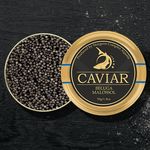
How Black Caviar Is Born: The Journey from Hatchling to Delicacy
Black caviar is elegant, delicious, and expensive. But behind every spoonful lies years of work, care, and patience. It’s not just a food — it’s a slow-crafted masterpiece of aquaculture.
It All Starts with an Egg
Yes, to get caviar… you first need caviar! Female sturgeons are gently stimulated to spawn. Their fertilized eggs hatch into tiny fry — fragile, sensitive, and in need of perfect conditions. Temperature, oxygen, light, food — everything has to be just right.
In the wild, sturgeons hatch in rivers, swim to the sea, and return years later. On farms like Aquatir in Moldova, they live in a carefully controlled “closed-cycle” environment — natural-like, but clean and safe.
Growing a Sturgeon Takes Time — A Lot of It
Think caviar is a quick process? Not even close. Belugas can take 15 to 20 years to mature. Russian sturgeons — around 7 to 9 years. During that time, the fish are carefully monitored, fed a special diet, and protected from stress.
Modern farms use smart sensors, water analyzers, and cameras to track every parameter. Why? Because sturgeons are like aquatic nobles — they don’t like loud sounds, temperature swings, or poor water quality.
How Is the Caviar Collected?
Once the female is ready, it’s time for the most delicate step: extracting the eggs. The roe is gently removed, cleaned, rinsed, and salted using the classic “Malossol” (lightly salted) method — no chemicals, just salt and care.
Some farms even use non-lethal techniques where the caviar is gently “milked” from the fish, allowing her to live on. It’s more complex and expensive, but it’s humane.
📦 From Farm to Tin
After salting, the caviar is packed into tins and stored under precise conditions. And then begins its delicious journey — tastings, exports, luxury dinners. Every tin holds more than just taste — it holds nearly a decade of dedication.
Modern caviar farming isn’t just a business — it’s a culture. Thanks to farms like Aquatir, we can enjoy black caviar without harming wild sturgeon populations or the ecosystems they inhabit.





Leave a Reply